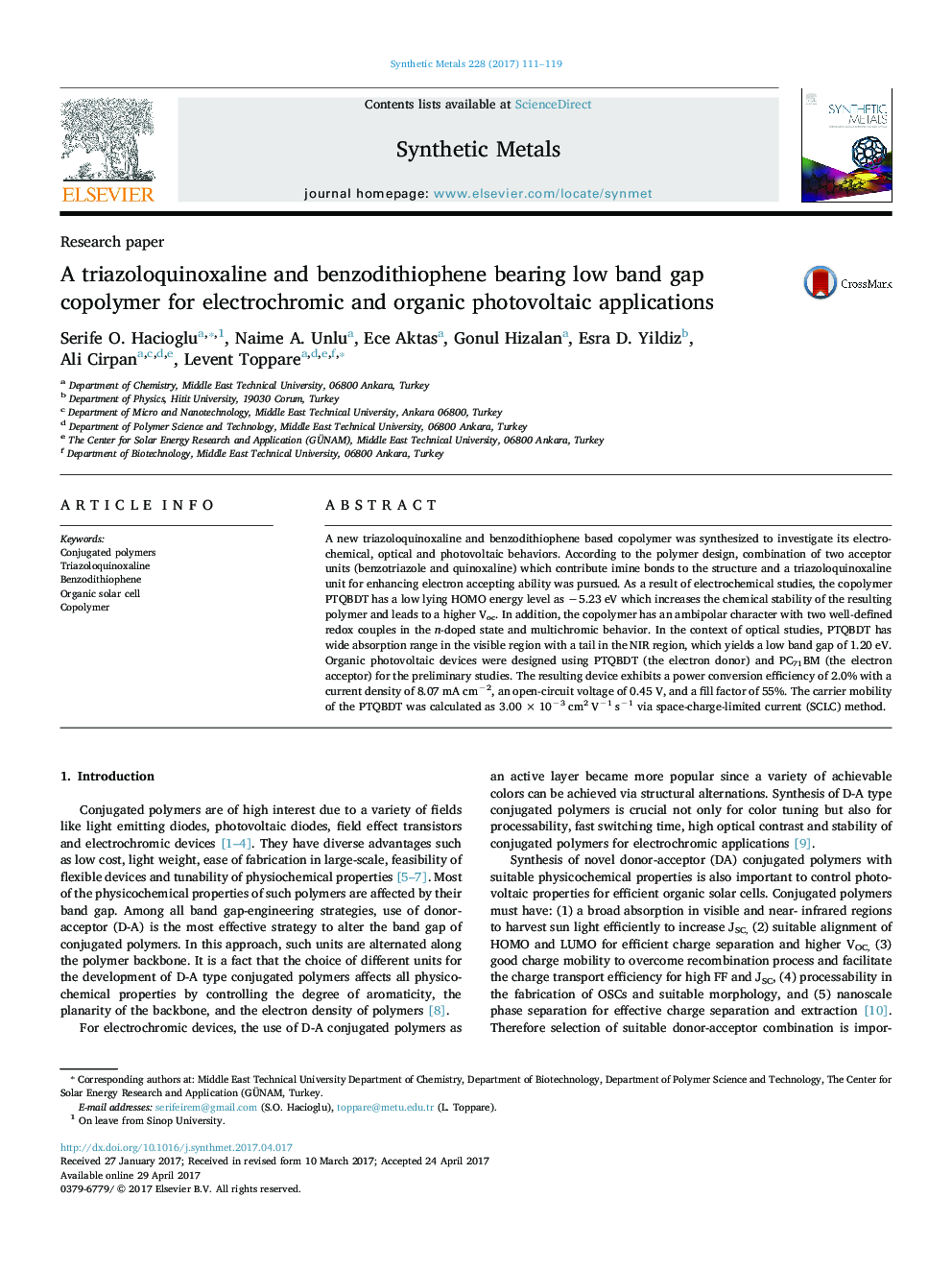| کد مقاله | کد نشریه | سال انتشار | مقاله انگلیسی | نسخه تمام متن |
|---|---|---|---|---|
| 5435463 | 1509350 | 2017 | 9 صفحه PDF | دانلود رایگان |
- Combination of two acceptor units (benzotriazole and quinoxaline) which contribute imine bonds to the structure and a triazoloquinoxaline unit for enhancing electron accepting ability.
- Ambipolar character with two well-defined redox couples in the n-doped state and multichromic behavior.
- A wide absorption range in the visible region with a tail in the NIR region, which yields a low band gap of 1.2Â eV
A new triazoloquinoxaline and benzodithiophene based copolymer was synthesized to investigate its electrochemical, optical and photovoltaic behaviors. According to the polymer design, combination of two acceptor units (benzotriazole and quinoxaline) which contribute imine bonds to the structure and a triazoloquinoxaline unit for enhancing electron accepting ability was pursued. As a result of electrochemical studies, the copolymer PTQBDT has a low lying HOMO energy level as â5.23Â eV which increases the chemical stability of the resulting polymer and leads to a higher Voc. In addition, the copolymer has an ambipolar character with two well-defined redox couples in the n-doped state and multichromic behavior. In the context of optical studies, PTQBDT has wide absorption range in the visible region with a tail in the NIR region, which yields a low band gap of 1.20Â eV. Organic photovoltaic devices were designed using PTQBDT (the electron donor) and PC71BM (the electron acceptor) for the preliminary studies. The resulting device exhibits a power conversion efficiency of 2.0% with a current density of 8.07Â mAÂ cmâ2, an open-circuit voltage of 0.45Â V, and a fill factor of 55%. The carrier mobility of the PTQBDT was calculated as 3.00Â ÃÂ 10â3Â cm2Â Vâ1Â sâ1 via space-charge-limited current (SCLC) method.
Journal: Synthetic Metals - Volume 228, June 2017, Pages 111-119
